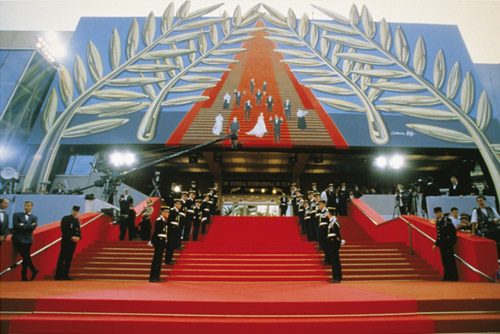The Palais des Festivals is 30 years old !
The Palais des Festivals is 30 years old !
2013, The Palais des Festivals celebrates the 30th anniversary of its existence
This year, the “new” Palais des Festivals celebrates the 30th anniversary of its existence - an ideal excuse to dive into the history of Cannes, in an attempt to discover just how a tiny fishing village in 1830 has managed, less than 200 years later, to achieve worldwide fame for its
- Film Festival, Palais and Croisette,
- major business and media conventions,
- hosting of top political and economic “summits”.
The journey began almost by chance:
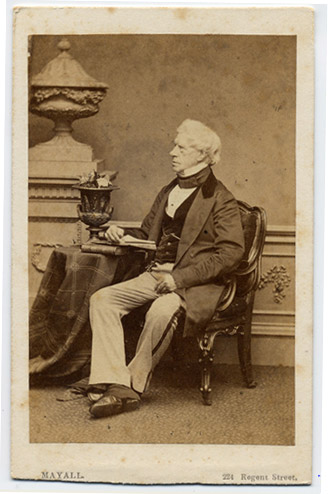 Henry Brougham, British lawyer, politician and statesman, was raised to the peerage in 1830 and appointed Lord Chancellor in the newly-elected Whig government. He lost the position in 1934, when the Tories were returned to power.
Henry Brougham, British lawyer, politician and statesman, was raised to the peerage in 1830 and appointed Lord Chancellor in the newly-elected Whig government. He lost the position in 1934, when the Tories were returned to power.
He decided to travel to Nice, which was at that time part of the Duchy of Piedmont and had been a very popular wintering place for the British aristocracy since the middle of the previous century.
He found that the Piedmont frontier (the River Var, just several miles from Nice) was closed to travellers because of a cholera outbreak in northern France and was obliged to turn back.
As luck would have it, he got lodgings for the night at the Auberge Pinchinat, just about the only hostel available in Cannes, at that time a village of 3000 inhabitants, grouped on the Le Suquet hill and around the small port.
Aubin-Louis Millin, conservator at the National Library in Paris, passing through Cannes in 1804, described the village as “well-built, but offering nothing of interest” and the territory as “arid, uncultivated heath-land”.
Brougham stayed, however, buying a large parcel of land eight days later, on which he immediately began construction of an enormous Italian-style villa – the Villa Eleonora-Louise, named in memory of his daughter.
Until his death, 34 years later, he was an indefatigable writer and reformist, and, more importantly for Cannes, a tireless and successful promoter of “his” town of Cannes to his aristocratic friends.
Here we find very first seeds of Cannes’ worldwide reputation for glamour and style and of the City’s fantastic success as a holiday, festival and business convention centre, outstripping in these terms its far bigger sister, Nice, which had nevertheless quite a few decades start.
First Cannes dominated as a winter holiday paradise,
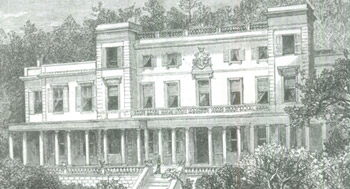 attracting not just the fashionable crowd, but the “crème de la crème”- sovereigns, aristocrats, diplomats, tycoons…
attracting not just the fashionable crowd, but the “crème de la crème”- sovereigns, aristocrats, diplomats, tycoons…
People like Queen Victoria and her Consort, Grand-Duke Michel of Russia, Grand-Duke Nicolas and the Empress, Albert-Edward the Prince of Wales who subsequently became Edward VII….
Maupassant observed: “Princes, everywhere Princes – those who adore Princes can be happy in our democratic land."
Prosper Mérimée, although a genuine Anglophile, spoke of “those large and ugly chateaux built by the English”.
Curiously enough, he had first passed through Cannes the same year that Brougham “found” the village. Only later did he become a winter regular, eventually dying there in 1870 – the very year that Cannes boasted 34 hotels and 215 villas and chateaux!
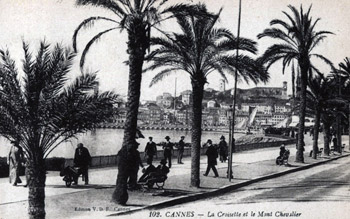 In 1914, Cannes had 92 hotels, 15 banks, 30000 inhabitants and well over 200 villas…. The Great War brought the Belle Époque to a close, the illustrious winter visitors faded away.
In 1914, Cannes had 92 hotels, 15 banks, 30000 inhabitants and well over 200 villas…. The Great War brought the Belle Époque to a close, the illustrious winter visitors faded away.
But the end of the war saw disaster avoided with the arrival of the fashion for a sun tan - until then thought to be “vulgar” – and summer beach mania took over. Cannes became the luxury resort of the fashionable, continuing and reinforcing its reputation for glamour, frivolity, style….
In 1939, the idea of a Film Festival took shape,
spurred on by the construction two years earlier in Venice of the ambitious “Palazzo del Cinema” to house the Italian festival, La Mostra de Venise, as well as by the interference of the German and Italian fascist governments in the selection of films to be shown there. All plans finally came to nothing when German troops entered Poland on 1st September.
After the War, plans for a Festival moved quickly under the impulsion of the Provisional Government of General de Gaulle.
From a field of 5 or 6 contenders, Cannes was chosen as the venue (for its sunny climate and its illustrious past, which had equipped it so well with luxury hotels and a taste for the high life).
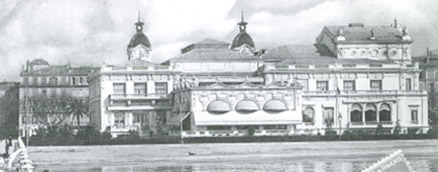 Festivals were held in the autumn of 1946 & 1947, in the old Municipal Casino, which had been built in 1905-1907 and extended by the famous “Salle des Ambassadeurs” in 1919. Simultaneously, Dr Picaud, mayor of Cannes, determined that Cannes should have its own Palais dedicated to the cinema. He succeeded in getting a loan of 110 million francs (€ 17 million) through the City Council. Construction started, and managed to continue, despite the inadequacy of the funding – militants of the CGT construction Union worked as volunteers…
Festivals were held in the autumn of 1946 & 1947, in the old Municipal Casino, which had been built in 1905-1907 and extended by the famous “Salle des Ambassadeurs” in 1919. Simultaneously, Dr Picaud, mayor of Cannes, determined that Cannes should have its own Palais dedicated to the cinema. He succeeded in getting a loan of 110 million francs (€ 17 million) through the City Council. Construction started, and managed to continue, despite the inadequacy of the funding – militants of the CGT construction Union worked as volunteers…
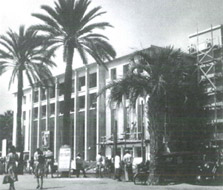 The “Palais Croisette”, on the site of the old and handsome “Cercle Nautique” (Yacht Club), was finally completed, at the very last minute, for the opening of the 1949 Festival.
The “Palais Croisette”, on the site of the old and handsome “Cercle Nautique” (Yacht Club), was finally completed, at the very last minute, for the opening of the 1949 Festival.
With the exception of 1950 (more funding difficulties) and 1968 (political turmoil & Nouvelle Vague protests), the Festival was held there annually until 1982. However, despite enlargement to the Palais in 1969/70, the Festival’s enormous artistic and media success was making a new home inevitable.
Planning began in the late 70’s and the new “Palais des Festivals et des Congrès”, on the site of the old Municipal casino (another handsome building demolished!), was completed in 1982, amidst great architectural controversy, for the sum of 550 million francs (87 million euros).
And that is another story…. Of yet more growth and success…. Amidst the inevitable controversies, scandals, glamour and excess...
Publication Director: Bruno Draillard
Writers: Sophie Menassol, John Bee
